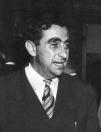Why Was The Hydrogen Bomb Invented, Who Created The Hydrogen Bomb, and, Where Was The Hydrogen Bomb Made?Who Created The Hydrogen Bomb? Edward Teller (Picture Shown) created the Hydrogen Bomb in 1952 with the help of Dr. Richard L. Garwin, (picture shown)Dr. Ray Kidder, Dr. Priscilla McMillian, Dr. George Keyworth II, Dr. Ulam, Dr. Fermi, Dr. Marshall Rosenbluth, and Dr. Conrad Longmire. Edward Teller was born in Budapest, Hungary in 1908. He got his doctor's degree from the University of Leipzig in Germany. He traveled to America at age 27 in 1935. During World War II, He joined the effort to create a nuclear weapon. He worked at the laboratory in Los Alamos, New Mexico, where the first Atomic Bomb was built. He helped found what is now the Laurence Livermore Laboratory, In Livermore, California. Recently, Teller's supporters and opponents all supported the idea of a lab name change in Teller's honor. They haven't changed the name yet, but they will soon. In the Livermore Lab, Teller dedicated his life to designing nuclear weapons. He was the associate director there from the years 1954-1958, 1960-1975, and was Director from 1958-1960. Recently, Teller has been having numerous heart attacks. After his first, he sat down with an interviewer and talked about his life. Recently, in September 2003, Teller had one final and fatal heart attack and died at the age of 95.
|

Why Was the Hydrogen Bomb Invented? While Edward Teller was working at the Livermore Laboratory, he also assisted in the creation of the Atomic bomb. After creating the Atomic bomb, he questioned the ability to create a more powerful weapon. As his dream carried on, he started collecting the bomb's designers, including Dr. Garwin, who was a 23-year-old faculty member at the University of Chicago during summer break in 1951. With Dr. Teller's dream, he thought of creating a bomb that used the high heat of an atomic bomb to ignite hydrogen fuel, fusing its atoms together and releasing more powerful bursts of nuclear energy. But, no one could think of a way to do that. Dr. Teller thought of creating a radiation implosion, which was to build a cylindrical casing that would hold the atomic bomb and hydrogen fuel at opposite ends. The exploding bomb would hit the case, making it glow and flooding the interior of the casing with radiation pressure intense enough to light the hydrogen fuel. No one thought this idea would work. Later, Dr. Garwin recalled Dr. Teller telling him to use a preliminary design and use it in his experiment. On July 15, 1951, Dr. Garwin had his design finished. He continued working on it until he went back to Chicago. Then, Teller's team kept working until early 1952. The experimental bomb, named "Mike" (Picture shown) was two stories high. On November 1st, 1952, 7:15 A.M. local time, it vaporized the Pacific island of Elugelab, a mile in diameter. Its power was 700 times the power of the Atomic bomb dropped on Hiroshima. Unlike Atomic bombs, the Hydrogen Bomb had NO DESTRUCTIVE LIMITS. "Mike" was 8 miles wide and 27 miles high. Radioactive mud fell out of the sky followed by fallout and acid rain. |

Where was the Hydrogen Bomb Made? The Hydrogen Bomb was created in the Lawrence Livermore Laboratory, which is in Livermore, California. |

|